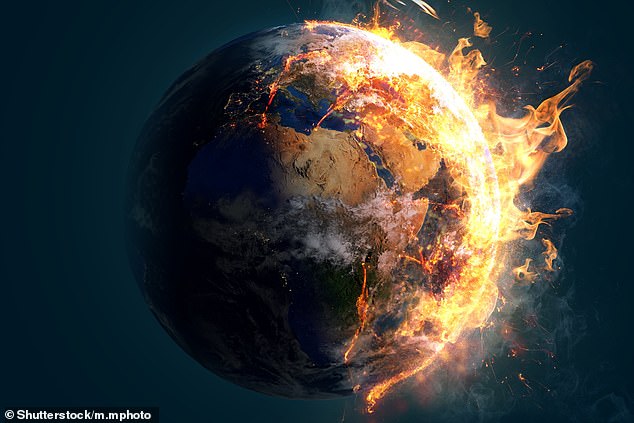
Scientists Predict 7°C Global Warming by 2200, Risking Catastrophic Floods, Famine, and Heatwaves
Earth’s Scorching Future: 7°C Warming by 2200 Even with Moderate Emissions
(Images: Map of global temperature projections; wildfire devastation; drought-stricken crops)
A new study warns that Earth could warm by a staggering 7°C (12.6°F) by 2200, even if carbon emissions remain moderate. Researchers at Germany’s Potsdam Institute for Climate Impact Research (PIK) predict catastrophic consequences, including crop failures, coastal flooding, and extreme weather, unless urgent action is taken.
Dire Consequences
- Food Collapse: Staple crops like wheat and rice could fail under extreme heat, triggering global food shortages.
- Coastal Crisis: Rising seas from melting ice sheets may displace millions in cities like Miami, Shanghai, and Mumbai.
- Extreme Weather: Deadly heatwaves, wildfires, droughts, and storms could become routine.
Image: Australian farmer inspecting withered crops during a drought
The Science Behind the Forecast
Using the CLIMBER-X climate model, the study simulates interactions between CO₂, methane, and feedback loops. Even if emissions stop today, there’s a 10% chance of 3°C warming by 2200. Three scenarios were analyzed:
- Low emissions: Rapid CO₂ cuts limit warming to 2°C.
- Moderate emissions: Current policies lead to 7°C warming.
- High emissions: Unchecked fossil fuel use causes 10°C+ spikes.
Image: Graphs showing temperature and CO₂ trends under different scenarios
Feedback Loops Accelerate Disaster
Natural processes like methane release from wetlands and CO₂ from wildfires could amplify warming. For example:
- Heavy rains fuel flammable grass growth, which later dries and spreads fires.
- CO₂-rich rainwater breaks down rocks, releasing more greenhouse gases.
“Reducing emissions alone may not halt these cascading effects,” warns lead author Christine Kaufhold.
Methane: The Silent Threat
Methane, 25x more potent than CO₂, comes from landfills, livestock, and melting permafrost. While natural gas reduces direct emissions, leaks during extraction and transport worsen the crisis.
Paris Agreement Goals at Risk
The study stresses that limiting warming to 1.5°C—the Paris Agreement target—is only possible under rapid, drastic emission cuts. “The window is closing,” says co-author Matteo Willeit. Current pledges put the world on track for 2.4–2.6°C by 2100, but feedback loops could push temperatures higher long after.
Image: Protesters holding “Act Now” signs at a climate rally
A Call to Action
“Today’s choices shape the next millennia,” urges PIK director Johan Rockström. “We’re destabilizing Earth’s systems, risking irreversible damage.” The study, published in Environmental Research Letters, underscores the need for carbon removal tech and faster decarbonization.
The Bottom Line
Without immediate action, future generations face a hostile planet. As wildfires rage and cities drown, the message is clear: cut emissions faster, or face extinction-level consequences.
Image: Satellite view of melting Arctic ice
Fact Box: The Paris Agreement
- Goal: Limit warming to 1.5°C above pre-industrial levels.
- Status: Current policies fall short, risking 2.4–2.6°C by 2100.
- Key Actions: Phase out fossil fuels, scale renewables, protect forests.
(Word count: ~600)


